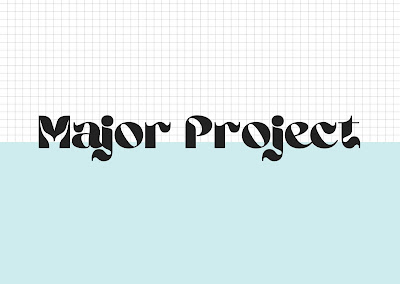Typography: Project 2A
06.10.2020 - 27.10.2020 (Week 7 - Week 10)
Seerat Tayyab Mukhtar Qureshi - 0345576 (BDCM)Typography
Project #2A
1. Lecture notes:
Mr. Vinod gave us important information to note down when formatting our typefaces.
- Have one long art board in Ai around 2-4 thousand pt in width and 1000pt height
- A good x height is around 500 pts
- Use a rectangle and then drag the guides to create a guideline
- A good cap height is about 650-675 pts (from base of 500 pt rectangle)
- Ascender line about 700 pts (from base of 500 pt rectangle)
- Curved strokes need to overshoot the x height a little
- Cmd + Y reveals frame of shapes
- Direct selection tool can be used to cut
- Cmd + J joins paths in frame view
- Anchor point tool + Shift + C can be used to make curves
Instructions:
Module Information Booklet
Project 2A:
We started off by doing some letter dissections so we could learn about the nuances of every letter.
Fig 1.1: Letter dissection in Ai
I then moved onto the next step which was to do some sketches of different fonts.
Fig 1.2: Sketches
Mr. Vinod said he liked the first one the most so I started on developing the font. I started by creating a wide art board in Illustrator.
Fig 1.3: Dimensions
I started by creating some guides the way Mr. Vinod showed us using the rectangle tool.
Fig 1.4: Guides in Ai
I then started working on my letterforms, I used Blackletter as a guide.
Fig 1.5: Blackletter
Fig 1.6: Draft
After showing Mr. Vinod this draft, he said it was okay but I needed to maintain more consistency so I adjusted the letterforms more.
Fig 1.7: Final, JPEG
Fig 1.8: Final, PDF
The next step was to make it into a font, we were supposed to use FontLab but due to CMCO we didn't have access to the computers on campus so Mr. Vinod suggested another website Calligraphr. I put all my letters into the template first.
Fig 1.9: Calligraphr template
I uploaded it onto the website and it looked a bit funky so I had to adjust it quite a bit.
Fig 2.0: Adjusting in Calligraphr
I made an attempt to type it out,
Fig 2.1: Typing it out
Clearly, the baseline of some of the letters was off and they didn't look great so I tried adjusting again.
Fig 2.2: Second attempt
This looked better but the "t" and "e" were still not looking right.
Fig 2.3: Third attempt
This looked better so I downloaded it. I decided it to name it Slackletter as a reference to Blackletter.
Fig 2.4: Opening it in InDesign
Fig 2.5: Draft poster, JPEG
Mr. Vinod gave me feedback on my poster.
Fig 2.6: Some of the adjustments I need to make
Mr. Vinod also mentioned we can download a 30 day free trial of font lab to use on our personal computers since we aren't able to go to campus. I downloaded it and uploaded my font to it. I adjusted the size and kerning.
Fig 2.7: Adjusting spacing
Fig 2.8: A4 poster, JPEG
Fig 2.9: A4 Poster, PDF
Feedback:
Mr. Vinod said that there was a lack of consistency in the font and that I needed to make sure the letters had the same elements and followed the principles of Blackletter fonts.
Reflection:
I found this project to be quite interesting and challenging. It really made me realise just how much work goes into making a font perfect and how many little details we simply ignore. It was a bit difficult and it took me quite a while to try and perfect it as far as I could. I definitely have much more appreciation for fonts in general and the effort that has been put into them.
Further reading:
Fig 2.7: The elements of typographic style
This week I read a few chapters from this book. This book is described as a must for all graphic designers. At the start of the book, Robert Bringhurst explains the "historical synopsis" of typography. He looks at how typography varied across different time periods such as the Renaissance, Neoclassical, Baroque, Romantic etc. He states the first principles of typography some of which are;
1. Typography exists to honour content
2. Letters have a life and dignity of their own
3. Read the text before designing it
4. Choose a typeface that will honour and elucidate the character of the text
To summarise, he states that typography should perform these services for the reader:
- invite the reader into the text
- reveal the tenor and meaning of the text
- clarify the order and structure of the text
- link the text with other existing elements
- induce a state of energetic repose, which is the ideal condition for reading.





















Comments
Post a Comment